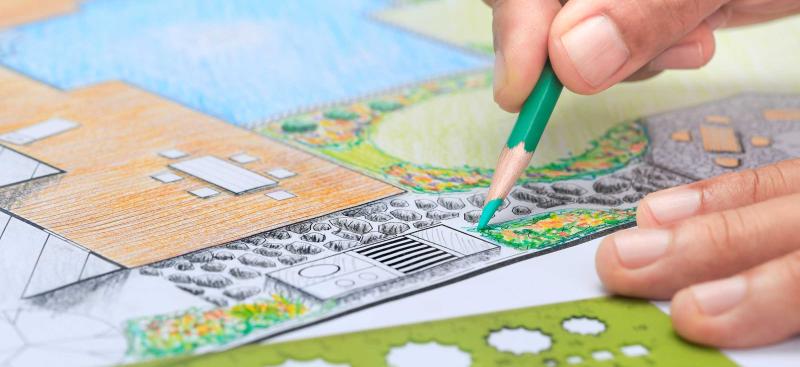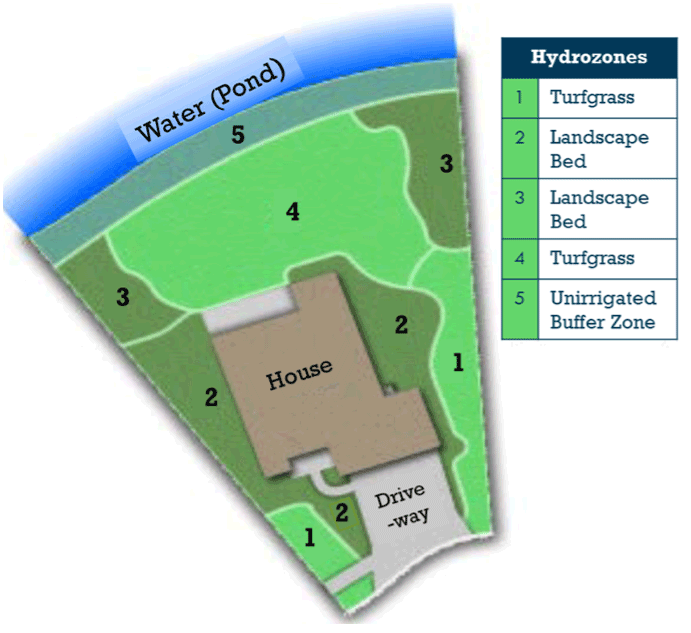An efficient irrigation system is designed to deliver the appropriate amount of water to match the needs of turfgrass and plant beds.
Irrigation Zones
An in-ground irrigation system typically waters the landscape in sections instead of all at once. These different sections are referred to as “irrigation zones.” Properly designed irrigation zones are important for three key reasons:
- Not all plants within the landscape need the same amount of water.
- Different types of sprinklers/emitters put out different amounts of water per minute.
- Site conditions may vary in different areas of your landscape.
Below is an example of how multiple irrigation zones may look in a landscape.
Hydrozones
Hydrozones are areas where plants with similar watering needs are grouped together. Grouping plants together with similar needs creates a more efficient irrigation system by helping to ensure that a plant does not receive too little or too much water.
Hydrozones should be considered when designing irrigation zones. For example, a drought-tolerant plant bed should be on a different zone from a water-loving plant bed. Turfgrass should also be on a separate zone from plant beds.
Types of Sprinklers/Emitters
Each irrigation zone should include a single type of sprinkler/emitter. This is because each type of sprinkler/emitter delivers a different amount of water per minute. Mixing different sprinkler heads or emitters in a single zone can result in uneven coverage, with some areas receiving too little or too much water.
Common types of sprinklers and emitters found in Florida include spray heads, rotor/rotating heads, rotary nozzles and micro-irrigation.
Variations in water output may also exist among different manufacturers. Check to make sure each zone has the same brand of sprinkler head.
Additional Design Considerations
- Sprinklers should be installed to deliver head-to-head coverage. When running, this means water from one sprinkler head should reach the closest neighboring head.
- Sprinklers in low-lying areas should have check valves. Check valves help prevent water from leaking out of the sprinkler head when the system is turned off.
- There should be even and efficient water pressure throughout the irrigation system for a more uniform delivery of water over the landscape. Devices to assist with pressure regulation can be installed at the valve box or each sprinkler head.
- There should be minimal overspray onto impervious surfaces, such as sidewalks, driveways or roadways.


